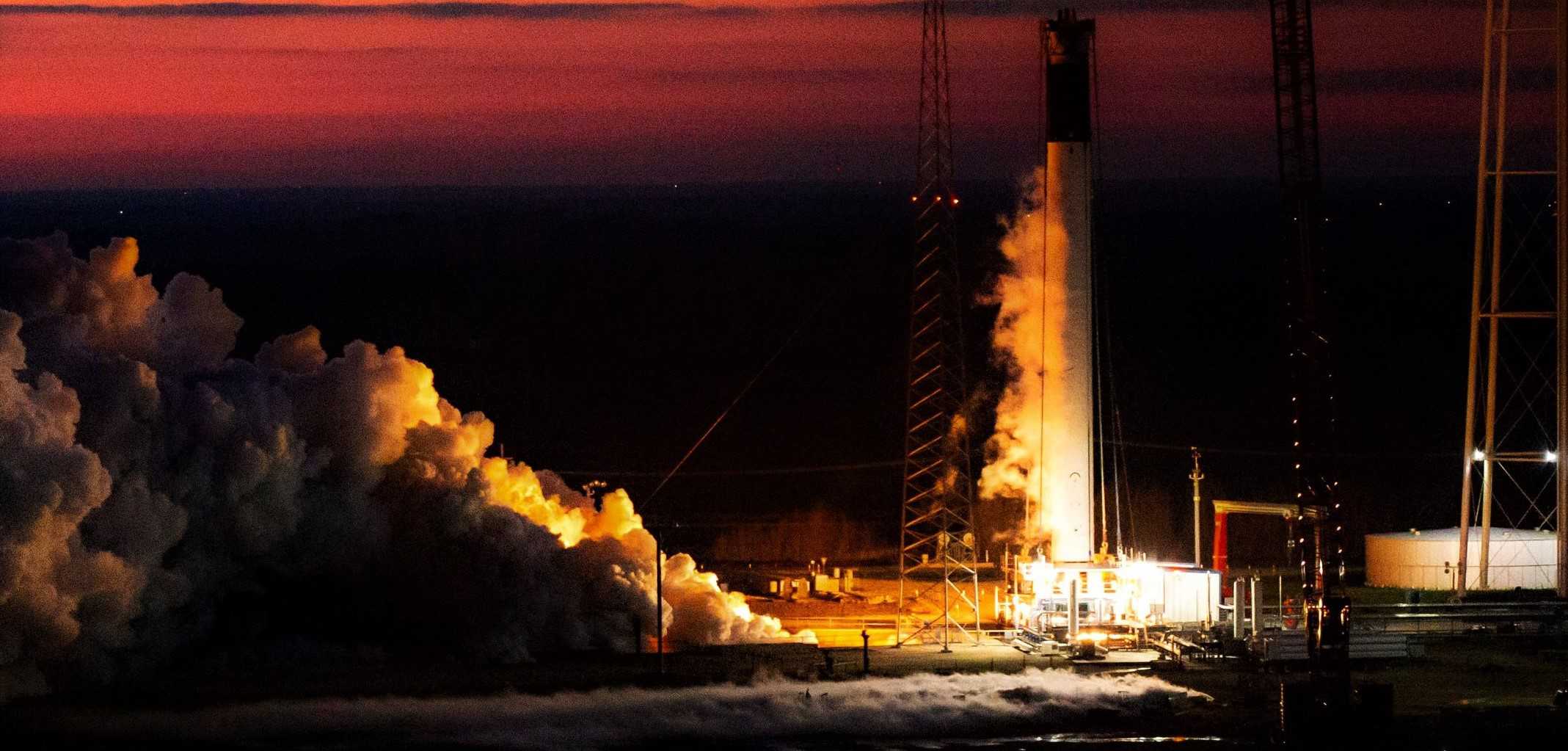
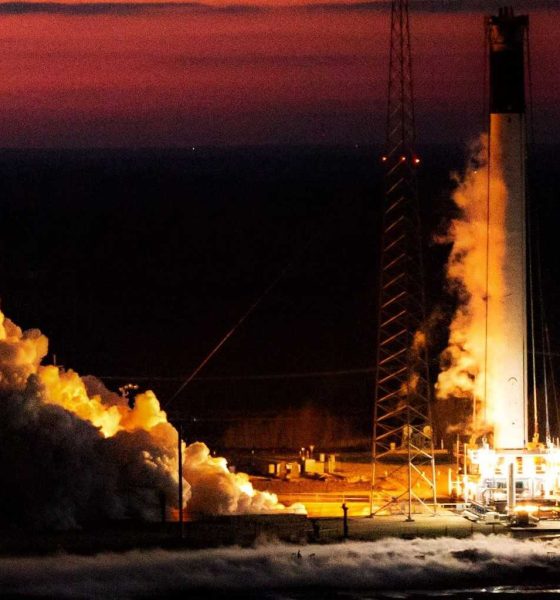
News
SpaceX military launch cleared for historic rocket landing attempt
SpaceX officially has permission to perform a Falcon 9 booster recovery after its next launch for the US Air Force, now guaranteed to be the first time a rocket booster attempts to land during an operational launch for the US military.
Alongside their booster landing attempt confirmation, the USAF Space and Missile Systems Center (SMC) also posted the first official SpaceX video of a rocket acceptance test released in almost 2.5 years, a test it says was completed just days after the GPS satellite it’s scheduled to launch arrived in Florida. The very same Falcon 9 booster was shown off in unprecedented detail just last month and now SMC says that SpaceX fired up the rocket at its McGregor, Texas development facilities for a routine static fire on February 13th. The company is currently scheduled to launch its second USAF GPS III satellite – Space Vehicle 03 (SV03) – no earlier than 7am EDT (11:00 UTC), April 29th, a target set just days ago.
With the spacecraft in Florida and factory-fresh Falcon 9 booster successfully proofed, all that remains is for SpaceX to test and deliver the mission’s Falcon upper stage and payload fairing (if it hasn’t already). After the booster – believed to be B1060 – is inspected and its tanks are cleaned, it can also be packaged and transported by road the rest of the way to SpaceX’s Florida launch facilities, setting the company up for the critical mission and historic landing attempt.
While SpaceX has technically already landed Falcon 9 and Falcon Heavy boosters after its NROL-76 and STP-2 launches for the NRO and USAF, the company only officially began operational military launches once its Falcon 9 rocket was fully certified. STP-2, for example, was effectively high-stakes make-work designed to help the USAF fully certify SpaceX’s brand new Falcon Heavy rocket to launch expensive – verging on irreplaceable – military satellites.
Its first truly operational US military launch occurred in December 2018, when Falcon 9 booster B1054 was intentionally expended in support the USAF’s inaugural GPS III launch, successfully placing the first of 10 (or 32) planned upgraded navigation satellites into orbit. It’s believed that the USAF required such extreme safety margins (extra propellant and performance) that SpaceX couldn’t even attempt booster or fairing recovery. This made B1054 the first (and hopefully only) Falcon 9 Block 5 booster to launch without even the basic hardpoints needed to attach landing legs.
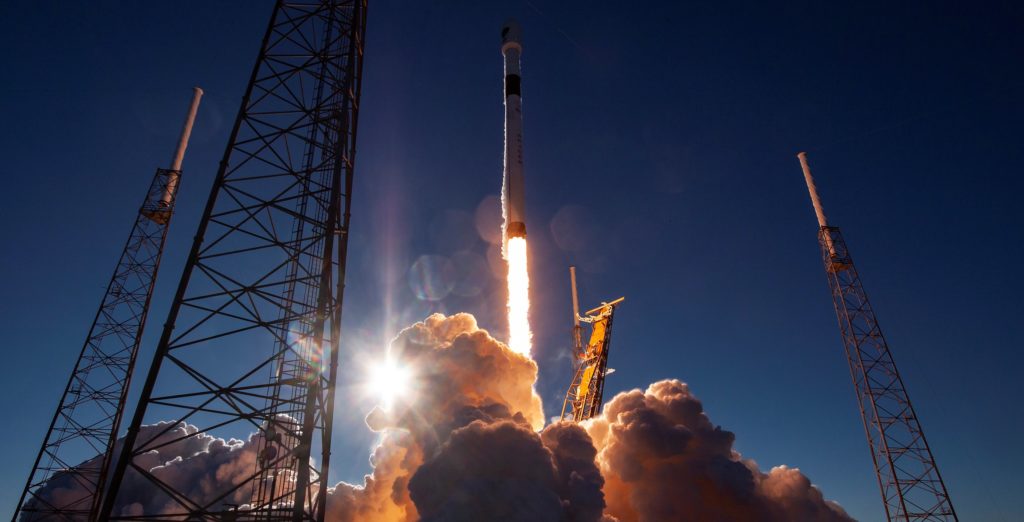
Effectively confirming that B1054’s demise was was a contrivance and by no means a technical necessity, the SMC announced on February 20th that SpaceX’s GPS III SV03 mission is officially “the first time a booster is planned to land on a drone ship during a NSS [National Security Space] launch.” Effectively identical to B1054 aside from the addition of grid fins and landing legs, this means that Falcon 9 booster B1060 will be able to attempt a landing aboard a SpaceX drone ship shortly after launch.
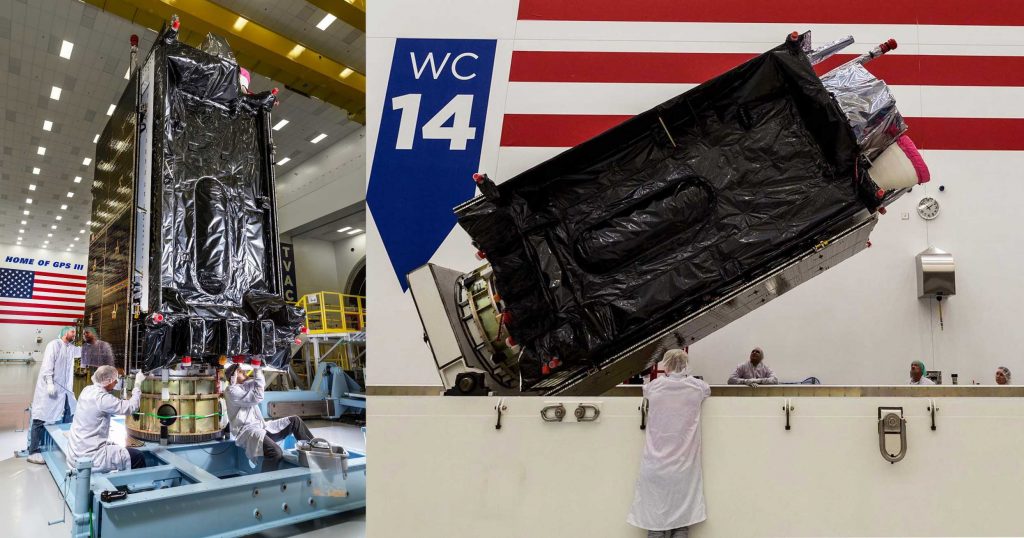
Just like GPS III SV01 satellite launched by SpaceX in December 2018 and the GPS III SV02 satellite launched United Launch Alliance (ULA) launched in August 2019, GPS III SV03 is a more than $500 million spacecraft designed to upgrade the US GPS navigation constellation. SpaceX has already won five (of five) competitively-awarded GPS III launch contracts thanks to its Falcon 9 rocket’s exceptionally competitive pricing, meaning that there is an excellent chance the company will win many more in the near future.
GPS III SV03 is one of 10 “Block IIIA” satellites to be launched between 2018 and 2026 and will be followed by another 22 “Block IIIF” satellites to be built by Lockheed Martin for ~$330M apiece. All 26 unassigned spacecraft will need launches of their own between now and the mid-2030s, worth anywhere from $1-2.5B to SpaceX if the company performs well on all five of its first contracts and continues to crush competitor ULA on launch costs.
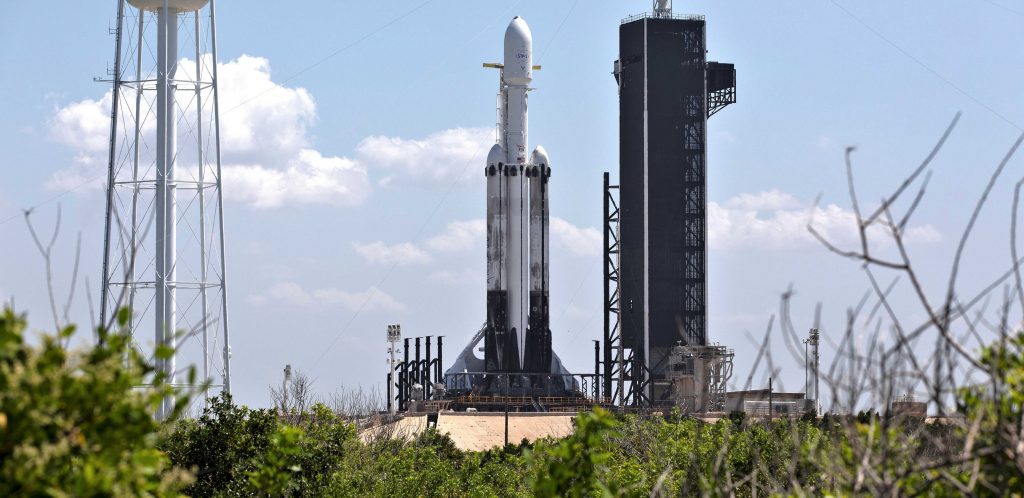
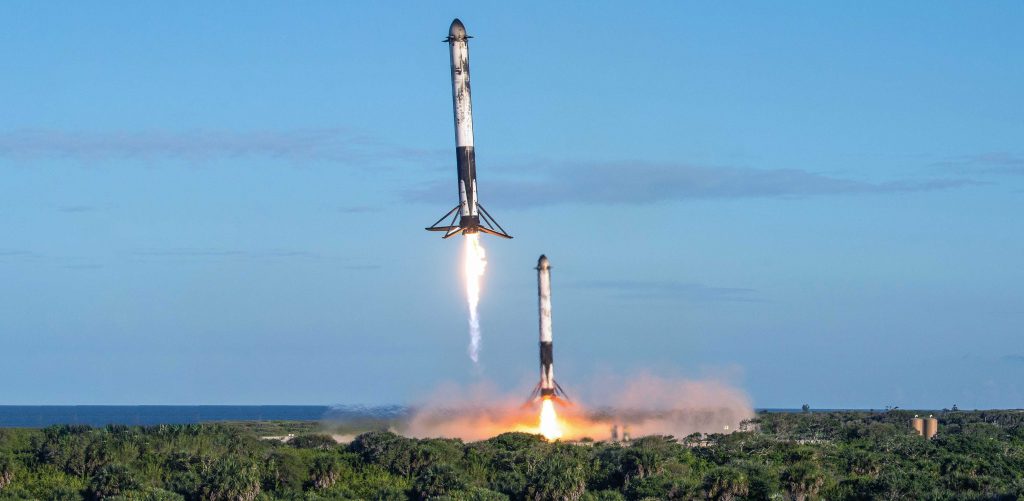
With the USAF already demonstrably interested in supporting Falcon booster reusability and now open to SpaceX recovering Falcon 9 boosters after moderately-challenging GPS III launches, it’s safe to say that SpaceX’s ultra-competitive pricing is here to stay.
Check out Teslarati’s Marketplace! We offer Tesla accessories, including for the Tesla Cybertruck and Tesla Model 3.

News
Nvidia CEO Jensen Huang explains difference between Tesla FSD and Alpamayo
“Tesla’s FSD stack is completely world-class,” the Nvidia CEO said.

NVIDIA CEO Jensen Huang has offered high praise for Tesla’s Full Self-Driving (FSD) system during a Q&A at CES 2026, calling it “world-class” and “state-of-the-art” in design, training, and performance.
More importantly, he also shared some insights about the key differences between FSD and Nvidia’s recently announced Alpamayo system.
Jensen Huang’s praise for Tesla FSD
Nvidia made headlines at CES following its announcement of Alpamayo, which uses artificial intelligence to accelerate the development of autonomous driving solutions. Due to its focus on AI, many started speculating that Alpamayo would be a direct rival to FSD. This was somewhat addressed by Elon Musk, who predicted that “they will find that it’s easy to get to 99% and then super hard to solve the long tail of the distribution.”
During his Q&A, Nvidia CEO Jensen Huang was asked about the difference between FSD and Alpamayo. His response was extensive:
“Tesla’s FSD stack is completely world-class. They’ve been working on it for quite some time. It’s world-class not only in the number of miles it’s accumulated, but in the way it’s designed, the way they do training, data collection, curation, synthetic data generation, and all of their simulation technologies.
“Of course, the latest generation is end-to-end Full Self-Driving—meaning it’s one large model trained end to end. And so… Elon’s AD system is, in every way, 100% state-of-the-art. I’m really quite impressed by the technology. I have it, and I drive it in our house, and it works incredibly well,” the Nvidia CEO said.
Nvidia’s platform approach vs Tesla’s integration
Huang also stated that Nvidia’s Alpamayo system was built around a fundamentally different philosophy from Tesla’s. Rather than developing self-driving cars itself, Nvidia supplies the full autonomous technology stack for other companies to use.
“Nvidia doesn’t build self-driving cars. We build the full stack so others can,” Huang said, explaining that Nvidia provides separate systems for training, simulation, and in-vehicle computing, all supported by shared software.
He added that customers can adopt as much or as little of the platform as they need, noting that Nvidia works across the industry, including with Tesla on training systems and companies like Waymo, XPeng, and Nuro on vehicle computing.
“So our system is really quite pervasive because we’re a technology platform provider. That’s the primary difference. There’s no question in our mind that, of the billion cars on the road today, in another 10 years’ time, hundreds of millions of them will have great autonomous capability. This is likely one of the largest, fastest-growing technology industries over the next decade.”
He also emphasized Nvidia’s open approach, saying the company open-sources its models and helps partners train their own systems. “We’re not a self-driving car company. We’re enabling the autonomous industry,” Huang said.
Elon Musk
Elon Musk confirms xAI’s purchase of five 380 MW natural gas turbines
The deal, which was confirmed by Musk on X, highlights xAI’s effort to aggressively scale its operations.

xAI, Elon Musk’s artificial intelligence startup, has purchased five additional 380 MW natural gas turbines from South Korea’s Doosan Enerbility to power its growing supercomputer clusters.
The deal, which was confirmed by Musk on X, highlights xAI’s effort to aggressively scale its operations.
xAI’s turbine deal details
News of xAI’s new turbines was shared on social media platform X, with user @SemiAnalysis_ stating that the turbines were produced by South Korea’s Doosan Enerbility. As noted in an Asian Business Daily report, Doosan Enerbility announced last October that it signed a contract to supply two 380 MW gas turbines for a major U.S. tech company. Doosan later noted in December that it secured an order for three more 380 MW gas turbines.
As per the X user, the gas turbines would power an additional 600,000+ GB200 NVL72 equivalent size cluster. This should make xAI’s facilities among the largest in the world. In a reply, Elon Musk confirmed that xAI did purchase the turbines. “True,” Musk wrote in a post on X.
xAI’s ambitions
Recent reports have indicated that xAI closed an upsized $20 billion Series E funding round, exceeding the initial $15 billion target to fuel rapid infrastructure scaling and AI product development. The funding, as per the AI startup, “will accelerate our world-leading infrastructure buildout, enable the rapid development and deployment of transformative AI products.”
The company also teased the rollout of its upcoming frontier AI model. “Looking ahead, Grok 5 is currently in training, and we are focused on launching innovative new consumer and enterprise products that harness the power of Grok, Colossus, and 𝕏 to transform how we live, work, and play,” xAI wrote in a post on its website.
Elon Musk
Elon Musk’s xAI closes upsized $20B Series E funding round
xAI announced the investment round in a post on its official website.

xAI has closed an upsized $20 billion Series E funding round, exceeding the initial $15 billion target to fuel rapid infrastructure scaling and AI product development.
xAI announced the investment round in a post on its official website.
A $20 billion Series E round
As noted by the artificial intelligence startup in its post, the Series E funding round attracted a diverse group of investors, including Valor Equity Partners, Stepstone Group, Fidelity Management & Research Company, Qatar Investment Authority, MGX, and Baron Capital Group, among others.
Strategic partners NVIDIA and Cisco Investments also continued support for building the world’s largest GPU clusters.
As xAI stated, “This financing will accelerate our world-leading infrastructure buildout, enable the rapid development and deployment of transformative AI products reaching billions of users, and fuel groundbreaking research advancing xAI’s core mission: Understanding the Universe.”
xAI’s core mission
Th Series E funding builds on xAI’s previous rounds, powering Grok advancements and massive compute expansions like the Memphis supercluster. The upsized demand reflects growing recognition of xAI’s potential in frontier AI.
xAI also highlighted several of its breakthroughs in 2025, from the buildout of Colossus I and II, which ended with over 1 million H100 GPU equivalents, and the rollout of the Grok 4 Series, Grok Voice, and Grok Imagine, among others. The company also confirmed that work is already underway to train the flagship large language model’s next iteration, Grok 5.
“Looking ahead, Grok 5 is currently in training, and we are focused on launching innovative new consumer and enterprise products that harness the power of Grok, Colossus, and 𝕏 to transform how we live, work, and play,” xAI wrote.








